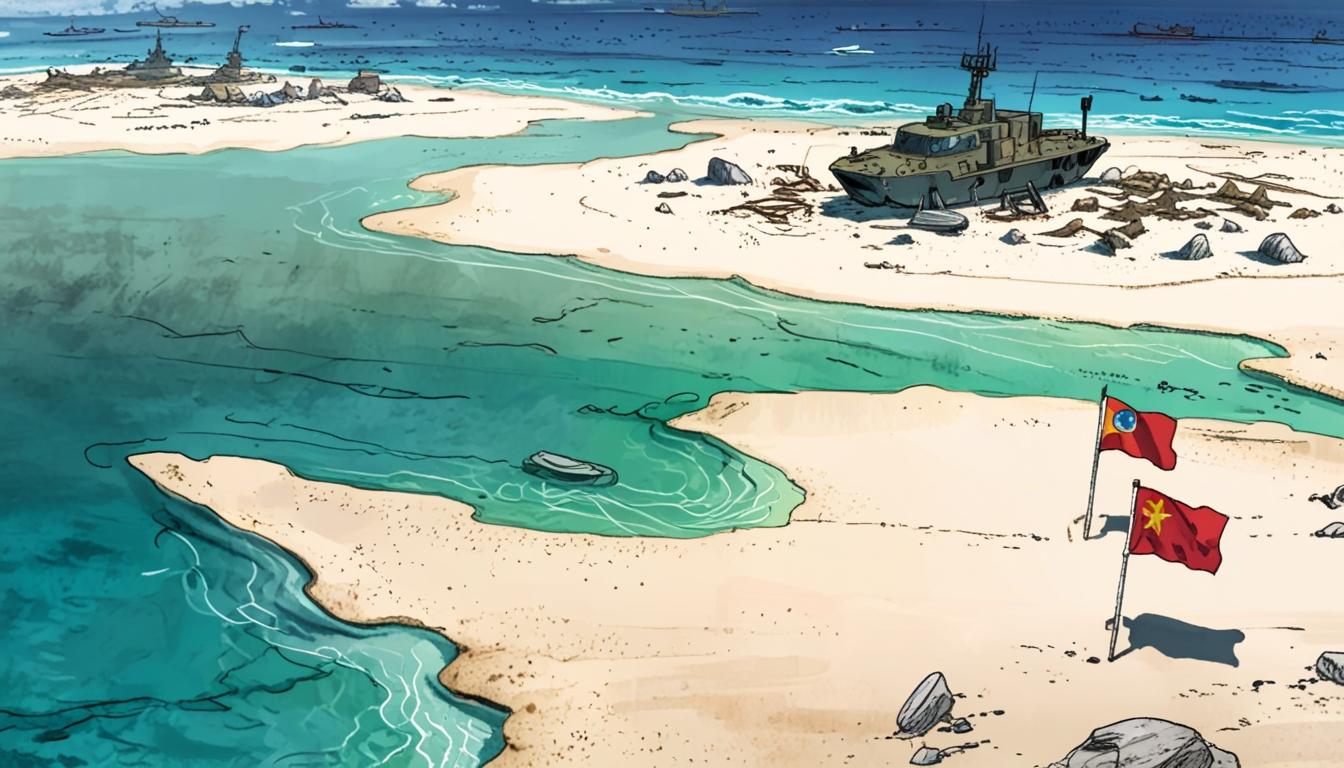China’s recent assertion of sovereignty over Sandy Cay, a disputed reef in the South China Sea, has heightened tensions between Beijing and the Philippines. This development comes just as the US and the Philippines prepare to commence joint military exercises in the nearby area.
On Sunday, the Philippine government deployed navy, coastguard, and maritime police personnel to Sandy Cay and two adjacent sandbanks within the Spratly Islands. The purpose of the deployment was to “uphold the country’s sovereignty, sovereign rights and jurisdiction,” a statement posted on X by the Philippines’ Department of Foreign Affairs confirmed. Filipino authorities also raised the national flag on the reef, emphasising their claim.
China had announced a day earlier that it had “implemented maritime control and exercised sovereign jurisdiction” over Sandy Cay by hoisting its own flag there. This marks the first official Chinese declaration of sovereignty on or near a land formation in these contested waters for at least ten years.
Sandy Cay, although a sandbank covering barely more than 200 square metres, possesses strategic significance. Its classification as a rock could permit the claimant nation to assert a territorial sea extending up to 12 nautical miles around it, overlapping with Thitu Island, which functions as the Philippines’ critical military outpost in the Spratlys.
The Philippines and the United States are scheduled to start coastal defence and island seizure drills on Monday, focusing on the Philippine territory nearest to the Spratly Islands. These exercises further underscore the strategic sensitivity of the area.
The White House expressed concern over China’s actions, with National Security Council spokesperson James Hewitt describing reports of China seizing Sandy Cay as “deeply concerning if true.” He added that such undertakings “threaten regional stability and violate international law.”
The South China Sea is subject to competing claims by China, the Philippines, Vietnam, Taiwan, Malaysia, and Brunei. Though China asserts nearly the entire sea, this claim was rejected by the Permanent Court of Arbitration in The Hague in 2016, which deemed China’s extensive maritime claims inconsistent with international law.
Since Ferdinand Marcos Jr took office as Philippine President in June 2022, Manila has increasingly asserted its maritime claims, prompting frequent clashes with Beijing. China leverages its extensive coastguard and maritime militia, reportedly the largest worldwide, to maintain dominance and has constructed military installations equipped with missiles, radars, and air force assets on several artificial islands in the region.
Sandy Cay is one of four reefs suspected by the Philippine government as targets for Chinese land reclamation and subsequent militarisation.
On Sunday, the Chinese coastguard stated its law enforcement officers had landed on Sandy Cay to investigate and “handle” what China termed “illegal” activities by Philippine officials. No direct confrontations were reported; footage from the Philippine Coast Guard showed no Chinese personnel present on the reef. However, the Philippine Coast Guard’s statement and ship tracking data reviewed by the Financial Times revealed that a Chinese coastguard ship and several Chinese maritime militia vessels continued to operate nearby.
This latest episode is part of a broader pattern of increasing tensions over territorial claims in the South China Sea, juxtaposed with significant military cooperation between the Philippines and the United States in the vicinity.
Source: Noah Wire Services
